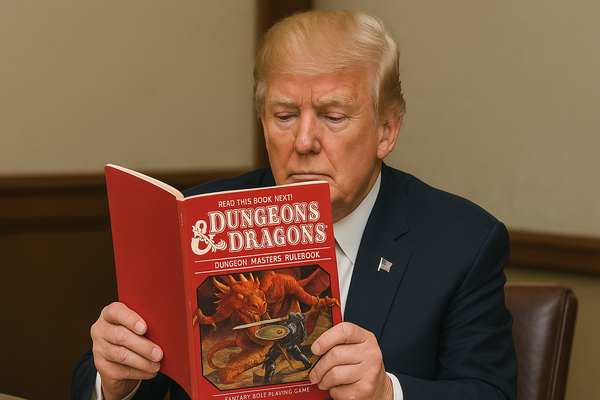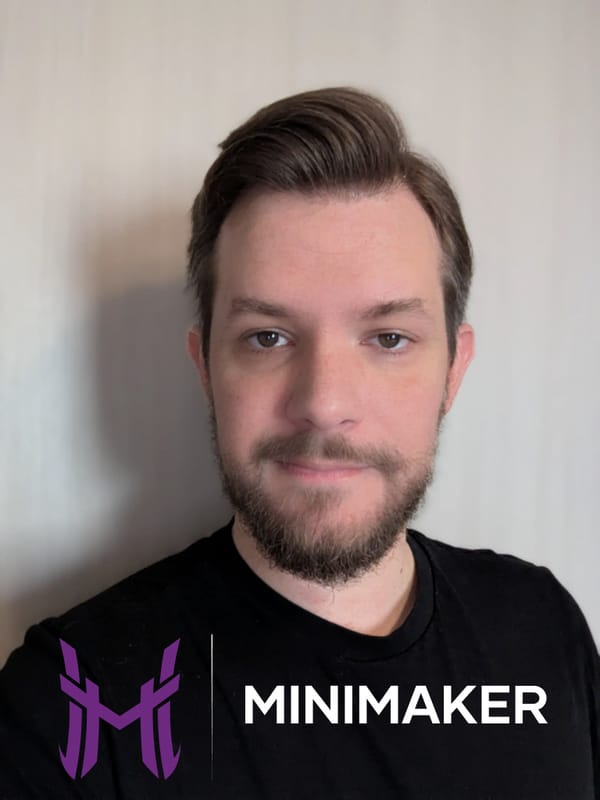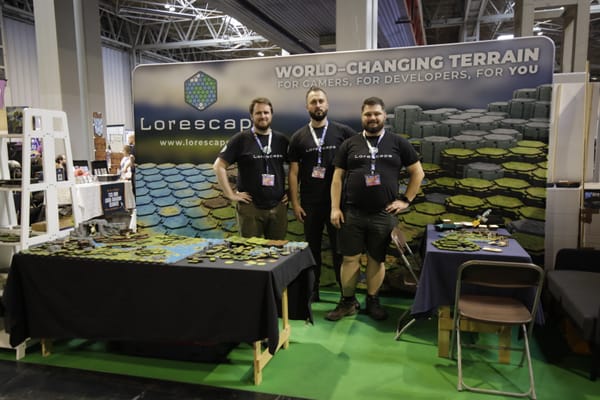From Architecture to Adventure: Tom Cartos on Crafting Immersive TTRPG Battlemaps
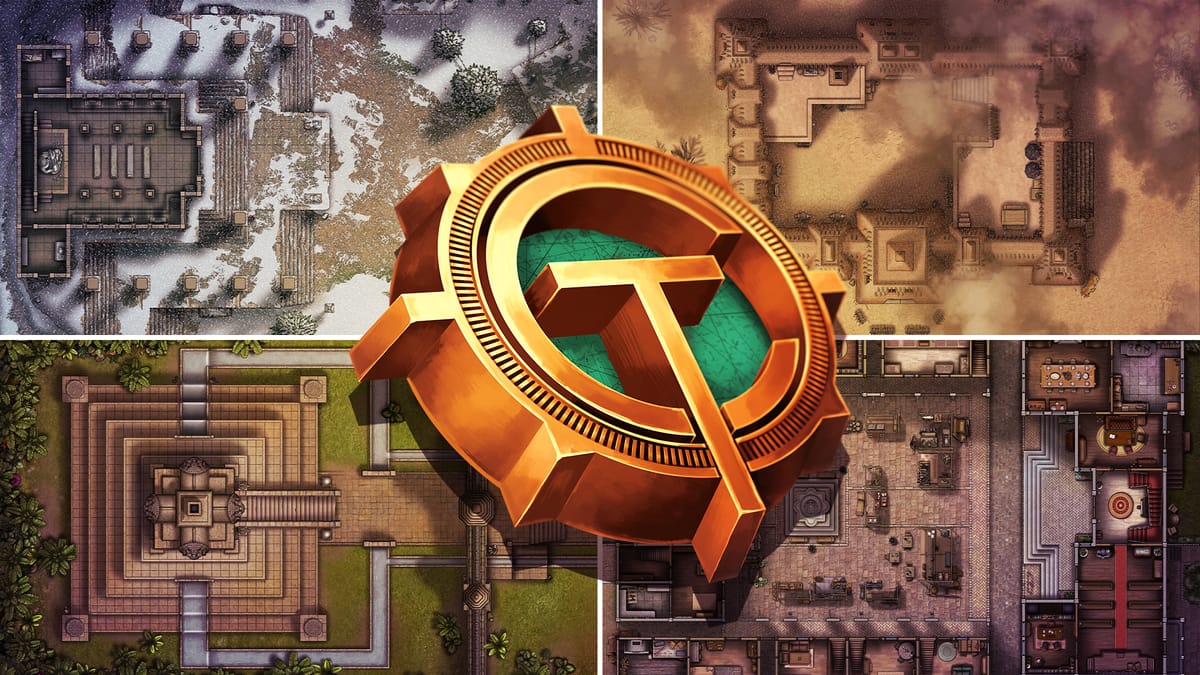
Tom Cartos is a professional cartographer and artist renowned in the tabletop role-playing game community for his highly detailed, multi-level battlemaps, assets, and tokens. With a background in architecture, design, and storytelling, he has been creating TTRPG content for over five years, enhancing the immersive experience for players and game masters alike.
Through his official website, Tom offers a vast collection of pre-made maps designed to add atmosphere and depth to gaming sessions. These resources are available in high-resolution formats, allowing for seamless integration into various virtual tabletop platforms.
Tom's dedication to the TTRPG community is further exemplified by his active Patreon, where he has garnered support from over 22,000 members. Through this platform, he releases new content weekly, including map sets, asset packs, and tokens, catering to a wide array of gaming scenarios.
In addition to his digital offerings, Tom has successfully launched several Kickstarter campaigns to fund physical battlemap books. Notably, his "Into the Wilds Battlemap Books" series features customizable, biome-themed maps designed to enrich TTRPG sessions. Building on this success, he introduced "Into the Wilds Battlemap Books Volume 3: Urban Edition," focusing on urban environments, and "TC Modern Battlemap Books," catering to modern and cyberpunk settings.
Tom's work is also accessible through various platforms, including the Roll20 Marketplace and Foundry Virtual Tabletop, where his maps and assets are integrated for user convenience. His collaborations with platforms like Roll20 have made his content easily accessible to a broader audience, further solidifying his reputation in the TTRPG community.
Through his innovative designs and commitment to quality, Tom Cartos continues to be a significant contributor to the TTRPG landscape, providing invaluable resources that enhance storytelling and gameplay.
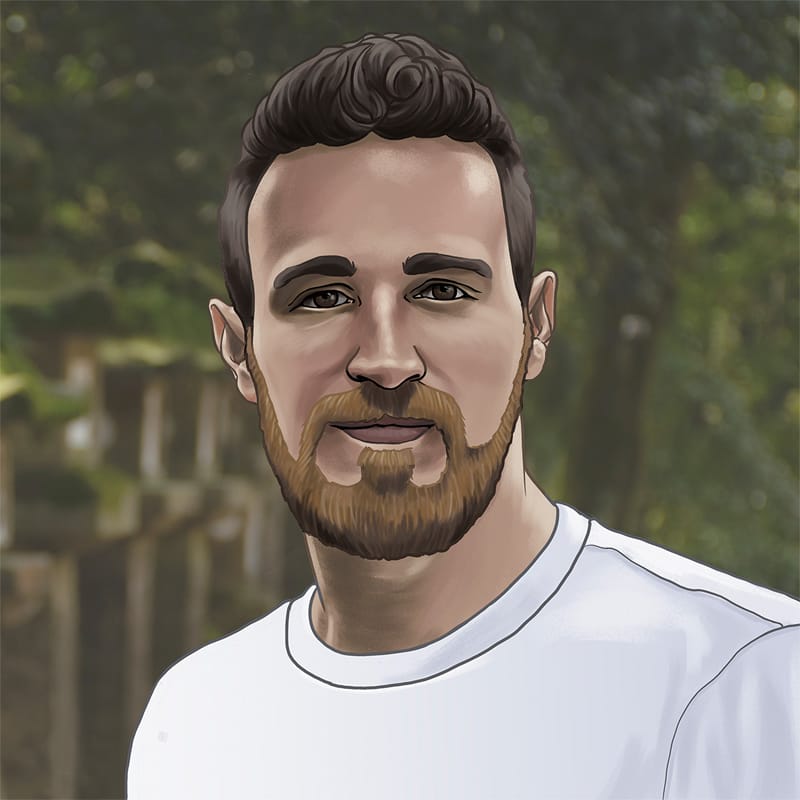
Hi Tom, can you share your journey into map-making and how it led to the creation of your brand?
I studied and worked as an architect for several years, working at firms in
London and Singapore. After about 5 years of working in the field, I was at a
company where the work was pretty unfulfilling creatively, and I have always
needed a creative outlet. To this end I started teaching myself the
fundamentals of drawing and art from books and YouTube videos in the
evenings, and while doing so would listen to podcasts.
A couple of podcasts I was recommended were 'The Adventure Zone' and 'Critical Role' which were my introduction to TTRPGs. I had played Tabletop Wargames like Warhammer as a teenager, but never got into TTRPGs as they weren't all that
prevalent in the UK when I was growing up.
When my contract at the Architecture firm ended, my partner and I decided to
move to Costa Rica where I was doing freelance architectural illustrations
online, combining my architectural design knowledge with my newly learned
artistic skills. After a few weeks I was contacted by someone looking for
battlemaps for their D&D game in a similar style to my architectural
illustrations. I already had some understanding of D&D due to listening to
Critical Role and TAZ, and was able to provide a series of maps for this client
over a period of a couple of months.
I had a lot of fun working on the project, more so than my architectural work,
so I did some research to see if redirecting to this new potential avenue of
work could be viable. I quickly discovered creators like CzePeku and Venatus
Maps, and I was already familiar with Jared Blando and Deven Rue via
Critical Role, and decided that using Patreon I could potentially earn enough
to make this work at least as a part time job.
That was in June 2019. By August my Patreon was up and running and to my genuine surprise I was gaining new patrons on a daily basis so I pivoted to working on the battlemap content full time after finishing up my remaining architectural
commissions. I have been doing so for over 5 years now.
What role did your background in architecture and design play in
shaping your TTRPG content?
I think anyone looking at my maps can see the architectural influences. I have
a preference for creating multi-level building interiors, which I believe are as
much of a 'dungeon' as any crypt or cave. I feel that my design background
allows me to create environments that are believable enough to be immersive,
while also ensuring interesting and variable gameplay options.
How has the TTRPG community influenced your work and creative
direction?
I constantly take feedback and suggestions from the community and my
patrons. My aim is to give GMs everything they need to make game prep
easier, and for their games to be as much fun as possible for their players.
Marketing & Audience Growth
Your Patreon has over 22,000 supporters—what strategies helped
you build such a strong following?
I think the most important thing for me has been consistency. I have posted new
maps and artwork every week without fail for the last 5 years. I always make sure to keep the level of quality high. If I don’t feel that a map is up to my usual standards I will either work on it until it is or start something new.
Which social media platforms have been the most effective for
promoting your content, and how do you engage with your audience
there?
It has changed over time. When I first started most of my subscribers came from
reddit, but that was back when there were only half a dozen or so ‘professional’
cartographers posting in the mapmaking and TTRPG subreddits. Over time they
became saturated to a point that the impact there was significantly lessened. Now
Pinterest is the social media site that drives the most traffic, but the biggest source of new members and subscribers is now word-of-mouth.
What marketing techniques have been most successful in attracting
new patrons and backers?
I think this also calls back to consistency. I share free versions of all of my maps and post something new multiple times a week, in a consistent way and with a consistent art style. I think this has led to a good level of brand recognition over time.
Many patrons tell me that they were constantly finding and using my free maps when searching for specific locations on Google or Pinterest, so decided to join my
Patreon to get access to the full library and also give me some support for the maps
they had already used for free.
How do you balance organic marketing (word-of-mouth, community
engagement) with paid advertising strategies?
I have only ever used paid advertising for my Kickstarter projects, as the short term nature of crowdfunding needs the extra boost. So far all of my Patreon growth has come through word-of-mouth and community engagement via social media.
What advice would you give to other creators looking to grow their
presence in the TTRPG space?
First of all make sure whatever you are doing, you are having fun. There are no ways to guarantee that any project will make money or grow a large following or audience, so there is no point chasing what you think might be popular if you aren’t going to enjoy doing it. It should be for you first and foremost and if others also derive some joy from it then that should be seen as a bonus and not the end goal. It will also be obvious if you are simply trying to copy someone else in an attempt to match their success, so ensure that what you are doing is authentically you.
Secondly connect with other creators. Not only will this allow for collaborations,
cross-promotion and peer-to-peer learning and knowledge sharing it will also make the work a lot more fun. ’Networking’ can sound like a scary word, but it just means making friends with people who have shared interests. Just make sure you are trying to make a genuine connection and not a purely transactional one as it will be very transparent.
Finally, be consistent. That doesn’t necessarily mean be super productive or make loads of stuff, it means be clear and open about what you are capable of creating each month at a quality you are happy with, without burning out, and then keep doing it. An audience doesn’t appear overnight and sometimes that can feel like shouting into the void for a long while. So long as you are having fun and making genuine connections in the space, the rest will come in time.
Your Kickstarter campaigns have been highly successful. What do
you think were the key factors in their success?
A large part of the success was the connections and friendships I made in the
industry. I was able to get a lot of incredibly valuable advice and feedback from my
peers when planning my first Kickstarter, and also help with promotion and sharing with their audiences.
Another factor is the products themselves. I made something that I felt was in demand and that I could create in a way that was uniquely my own and would stand out.
What lessons have you learned from running multiple Kickstarter
campaigns that you would share with aspiring creators?
You can never be too prepared. Be as ready as possible before hitting that launch
button. This doesn’t mean just getting the art and writing finished, it means
understanding the manufacturing pipeline by doing your research, getting viable
quotes for manufacturers, freight shipping, fulfilment, storage, knowing and
accounting for the fees at all steps of the process (there are a lot!), and making sure
you have an audience in place with a strong pre-launch following.
No matter how prepared you are, there will always be extra stuff that comes up so
being as ready as possible in advance will allow you the time and space to deal with
whatever happens. It is far better to hold off launching until you are ready than
launching too early and being caught out.
How do you plan your crowdfunding campaigns to ensure strong
engagement and funding goals are met?
The same answer as above, a lot of preparation and planning. You can’t ensure
engagement or funding, but I do everything possible that is in my control beforehand.
What challenges have you encountered in bringing physical products
like battlemap books to market, and how did you overcome them?
There are numerous challenges with any physical product, many of which are largely out of your hands. We have had to deal with things like storms delaying shipping, port strikes, and tariffs adding unexpected fees(yay). The best way to overcome them is to work with the right partners. We took our time to talk to a number of manufacturing and shipping partners before creating our products, and one of our primary requirements before signing with anyone was good communication. When issues arise, we are able to tackle them because the people we work with are very knowledgeable and quick to respond.
Beyond crowdfunding, what other monetization strategies do you use
to sustain your work?
I feel diversification of revenue streams is extremely important. As well as the
crowdfunding and two separate Patreons, I booth at conventions, I sell my digital
products on a variety of 3rd party marketplaces, I take commercial commissions for larger publishers, and I am in the process of setting up my own online store as well.
How important is community interaction for your brand, and what
steps do you take to foster a loyal audience?
Community interaction largely comes in the form of getting feedback and
suggestions from patrons and subscribers. I use regular polls to let patrons choose
what they would like me to make next, and I have an open line of communication for anyone who wants to contact me.
I think a ‘loyal’ audience comes from consistency (I’m going to keep bringing it up). I’ve shown time and again that I can be relied upon for regular, high quality, useful products and it’s very important to me that I continue to do that.
What types of content (behind-the-scenes, tutorials, sneak peeks) do
you find most effective in keeping your audience engaged?
I haven’t really used many of these techniques, although I do have a tutorial series
on youtube that explains my map making process in full, It’s a few years old now but is still relevant to how I work. I find my audience is more engaged by the finished product than anything else, as I am posting several times per week.
Do you collaborate with other TTRPG creators, influencers, or
platforms to expand your reach?
When I started, collaborations with other creators were definitely a method I used to expand my audience. Now I prefer to use my already established platform to help expand the reach of other creators.
How do you manage content creation while staying active on multiple
platforms? Any time-management tips?
You need to be diligent with your time definitely. Sometimes this can mean not letting perfect be the enemy of good. I am rarely 100% happy with any artwork I release, but if I can get to 90% happy I tend to find that is more than enough for my patrons and customers, and getting that last 10% can take an extra 50%+ in terms of time. You are almost always better off doing two things to 90% than one thing to 100%.
Secondly, if you do reach a level of success that allows you to hire assistance, your
first hire should be a social media manager. Posting to social media and self-
promotion in general is a whole job itself, apart from the creation side of things. Once you can free up that time it makes a huge difference.
What is your perspective on AI-generated art and its place in TTRPG
content creation?
In its current form AI generated art is effectively theft. Until there are models that do not rely on the wholesale unauthorised, unlicensed and unpaid use of copyrighted material, then it will have no place in my work.
Have you considered using AI tools for map design, asset creation, or
workflow optimization? Why or why not?
No, for the reasons listed above. In theory having a tool that could help me make
more content faster would be a dream, but I will not do so by stealing from others or enabling companies to steal on my behalf.
How do you see the future of digital map-making evolving with emerging technologies like AI and procedural generation?
It is clear many people do not feel as strongly as I do, and unbelievable amounts of
money are being pumped into AI right now. It’s not going anywhere so that is
something we have to contend with.
My more optimistic belief is that AI generated content will fill the role of low-quality, low-cost content that will be ‘good enough’ for some, but there will always be an intrinsically human need for human-made art with human intention behind it, and I will continue to be one of the many who endeavour to fulfil it.
Thanks Tom!


